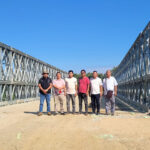Clogged drains will become a regular feature now with the onset of the rainy season. The sight of a clogged drain at the Tongdentsüyong–Alongmen Ward border, just below NH-02, has revealed more than lack of waste management or civic sense among the citizens. It has also brought to light the question of how drains are built. One finds it hard to understand why such a small culvert was built to drain such a big sewer on steep terrain. As per layman observation, the culvert ought to be bigger than the drain itself.
Instead, the culvert is like a bottleneck obstructing the free flow of the drain. This brings us to the question of planning and execution. Who is supposed to be planning the construction of such culverts and what are the parameters taken into consideration while sketching the estimates for such construction works? There has to be a system in place. Otherwise, unplanned construction is as good as not having any construction at all.
Think about all the financial resources invested in building a culvert that later on fails to serve its purpose but instead becomes a cause of inconvenience in itself. The culvert in question is not an isolated case. Apart from the other technicalities involved, all culverts must be built twice as big as the volume of the drain or stream so that it serves as a conduit for smooth flow of sewage.
Now, the other disturbing aspect of the particular drain is that there seems to be no one owning responsibility to keep the drain clean. It seems to be a dump yard where all the rubbish is deposited at will by everyone. The Ward authorities of Tongdentsüyong and Alongmen have a role to play here. However, it should not be one of coercion but of persuasion. Perhaps the people around the vicinity, including the shop owners, can be sensitized and made aware of the ill effects of irresponsible garbage disposal.
It must be realized that irresponsible garbage disposal in the drain here is not only negligent behavior but also pollutes the environment. Moreover, it causes much disservice to the people who live downstream. It is observed that this particular drain can be transformed into a ‘miracle’ if only the residents and citizens would take it up upon themselves to do so. It is an opportunity to prove that even a polluted drainage can be reclaimed and transformed into a gleaming stream where one can even draw clean water for domestic use.



